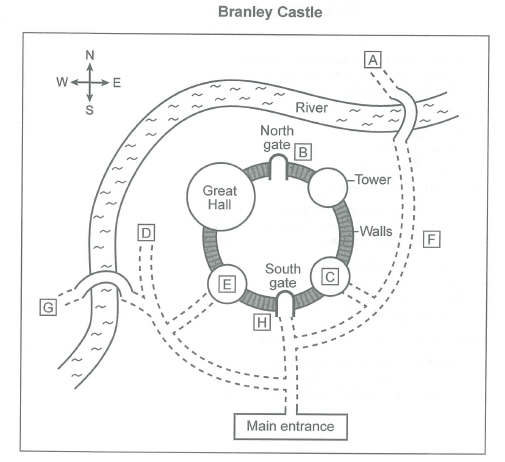Part 1: Questions 1-10
Complete the notes below. Write ONE WORD AND/OR A NUMBER for each answer.
TOTAL HEALTH CLINIC
PATIENT DETAILS
Personal Information
Name: Julie Anne Garcia
Contact phone: (1)
Date of birth: (2) , 1992
Occupation works as a: (3)
Insurance company: (4) Life insurance
Details of the problem
Type of problem: pain in her left (5)
When it began: (6) ago
Action already taken: has taken painkillers and applied ice
Other information
Sports played: belongs to a (7) club
goes (8) regularly
Medical history: injured her (9) last year
no allergies
no regular medication apart from (10)
Part 2: Questions 11 – 15
Choose the correct letter, A, B or C.
Visit to Branley Castle
11. Before Queen Elizabeth I visited the castle in 1576,
A repairs were carried out to the guest rooms.
B a new building was constructed for her.
C a fire damaged part of the main hall.
12. In 1982, the castle was sold to
A the government.
B the Fenys family.
C an entertainment company.
13. In some of the rooms, visitors can
A speak to experts on the history of the castle.
B interact with actors dressed as famous characters.
C see models of historical figures moving and talking.
14. In the castle park, visitors can
A see an 800-year-old tree.
B go to an art exhibition.
C visit a small zoo.
15. At the end of the visit, the group will have
A afternoon tea in the conservatory.
B the chance to meet the castle’s owners.
C a photograph together on the Great Staircase.
Questions 16 – 20
Label the plan below. Write the correct letter A-H next to questions 16-20.

16. Starting point for walking the walls
17. Bow and arrow display
18. Hunting birds display
19. Traditional dancing
20. Shop
Part 3: Questions 21 – 24
Choose the correct letter, A, B or C.
Woolly mammoths on St Paul’s Island
21 How will Rosie and Martin introduce their presentation?
A with a drawing of woolly mammoths in their natural habitat
B with a timeline showing when woolly mammoths lived
C with a video clip about woolly mammoths
22 What was surprising about the mammoth tooth found by Russell Graham?
A It was still embedded in the mammoth’s jawbone.
B It was from an unknown species of mammoth.
C It was not as old as mammoth remains from elsewhere.
23 The students will use an animated diagram to demonstrate how the mammoths
A became isolated on the island.
B spread from the island to other areas.
C coexisted with other animals on the island.
24 According to Martin, what is unusual about the date of the mammoths’ extinction on the island?
A how exact it is
B how early it is
C how it was established
Questions 25 – 30
What action will the students take for each of the following sections of their presentation?
Choose SIX answers from the box and write the correct letter, A-H, next to Questions 25-30.
Actions
A make it more interactive
B reduce visual input
C add personal opinions
D contact one of the researchers
E make detailed notes
F find information online
G check timing
H organise the content more clearly
Sections of presentation
25. Introduction
26. Discovery of the mammoth tooth
27. Initial questions asked by the researchers
28. Further research carried out on the island
29. Findings and possible explanations
30. Relevance to the present day
Part 4: Questions 31 – 40
Complete the notes below. Write ONE WORD ONLY for each answer.
The history of weather forecasting
Ancient cultures
• many cultures believed that floods and other disasters were involved in the creation of the world
• many cultures invented (31) and other ceremonies to make the weather gods friendly
• people needed to observe and interpret the sky to ensure their (32)
• around 650 BC, Babylonians started forecasting, using weather phenomena such as
(33)
• by 300 BC, the Chinese had a calendar made up of a number of (34) connected with the weather
Ancient Greeks
• a more scientific approach
• Aristotle tried to explain the formation of various weather phenomena
• Aristotle also described haloes and (35)
Middle Ages
• Aristotle’s work considered accurate
• many proverbs, e.g. about the significance of the colour of the (36) , passed on accurate information.
15th-19th centuries
• 15th century: scientists recognised value of (37) for the first time
• Galileo invented the (38)
• Pascal showed relationship between atmospheric pressure and altitude
• from the 17th century, scientists could measure atmospheric pressure and temperature
• 18th century: Franklin identified the movement of (39)
• 19th century: data from different locations could be sent to the same place by
(40)